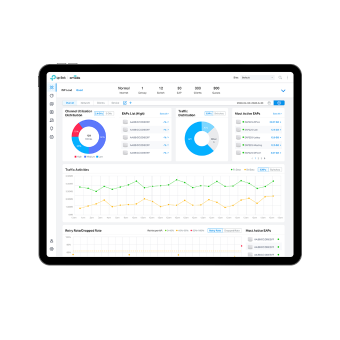VLAN configurations of the LAN ports on Omada Gateway in Controller mode
This article will introduce the VLAN configurations of the LAN ports on Omada Gateway in Controller mode, which will help to connect a non-Omada switch.
Note: LAN port indicates the Ethernet ports on Omada Gateway, while the default network is also named LAN. To avoid ambiguity, this article will use “default network” to refer to the “LAN network”.
Suppose there are three networks, as follows.

|
Network Name |
IP |
VLAN ID |
LAN Port |
|
LAN (Default) |
192.168.0.1/24 |
1 |
All |
|
Guest |
192.168.10.1/24 |
10 |
WAN/LAN2 |
|
Staff |
192.168.20.1/24 |
20 |
WAN/LAN2, WAN/LAN3 |
Then VLAN configurations of all LAN ports are as shown in the table below.
|
Port |
WAN/LAN2 |
WAN/LAN3 |
LAN |
|||
|
VLAN |
1 |
10 |
20 |
1 |
20 |
1 |
|
VLAN Tag |
Untagged |
Tagged |
Tagged |
Untagged |
Tagged |
Untagged |
|
PVID |
1 |
|||||
Summary: All LAN ports on Omada Gateway are in the default network, and their native networks are also the default network, which means that the PVIDs of those ports are the same as the VLAN ID of the default network. You can customize the VLAN ID of the default network, and it is recommended that you can use the default network as the management VLAN if necessary.
When you create a new VLAN Interface/Network, add a LAN port to that, then the port will be able to forward data from this network with VLAN Tag. You can set the ports on the switch and EAP according to your network requirements.
Is this faq useful?
Your feedback helps improve this site.
TP-Link Community
Still need help? Search for answers, ask questions, and get help from TP-Link experts and other users around the world.










